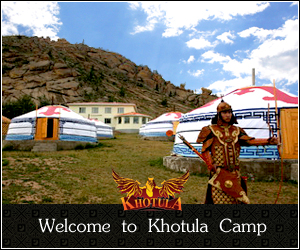The Moon Last Week
{mosimage}HOW many of you in Mongolia looked at the moon last Thursday night, or even on Friday? Those who did might have noticed something different; on both nights, especially on Thursday, our one and only satellite was at its biggest and brightest - 14 per cent bigger and 30 per cent brighter than the average full moon.
HOW many of you in Mongolia looked at the moon last Thursday night, or even on Friday? Those who did might have noticed something different; on both nights, especially on Thursday, our one and only satellite was at its biggest and brightest — 14 per cent bigger and 30 per cent brighter than the average full moon.
The moon’s role in bountiful harvests is common during autumns around the world and in most Asian religions a note of ritual significance is added. But this does not seem to be true of present-day Mongolian life. What about mythology and folklore? As usual with most things to do with this ancient land and culture unequivocal answers are hard to come by. Overlapping and parallel traditions, destruction of documents, and decimation of those who knew or could find out have meant that a linear record of thoughts and beliefs is at the moment difficult to prepare.
Tengeri may very well be the oldest concept of the steppes. It means the Sky, and is considered to be a male. One reason he is able to be everywhere at the same time is that he is not restricted by any form. As the male principle of creation he is responsible for giving us consciousness, while the mother principle, the earth, has given us life. The Sun, the Moon and the Stars are his sisters which makes them all female.
Not so in folklore, of uncertain vintage. There the sun and moon, the two constants between two normal waking-ups, are ancient totems. I am told there is a folk song saying, “The people of Mongolia whose father is the young moon and whose mother is the golden sun…” This makes the moon a male figure, as in the Indian pantheon. The sun as a woman is however very uncommon, and it is interesting to speculate just why ancient Mongolians equated solar and feminine attributes. Also, with the sun and the moon never seen together their conjugality should come under some strain.
Whatever its gender, the moon, surprisingly, plays very little role in old Mongolian beliefs and rituals. Among these was faith in the holy numbers: three, six and nine. The skins of black bulls had to be used for war drums to ensure victory. Fire was the most potent purifier. The nomads owed little to the moon and did not include it among household gods termed Ongghot. Basic Bon beliefs venerated the eternal blue sky, ancestors, hills and mountains, but no moon.
This possibly explains why there appears to be almost no reference to the moon in The Secret History of the Mongols, though I shall have to read with more care the translation published this year by the National University of Mongolia before I can be sure of this. The sun also does not fare much better, though it is mentioned at least once. The Idugud of the Uyigud sent envoys to Chinggis Qagan (sic), with a message beginning, “As the clouds clears (sic)/The Mother Sun appears…”
Buddhism with its baggage of often unidentified Indian beliefs changed all this and the soyombo is topped with the lunar semicircle, a circle, and a dot which traditionally combine into aum, the sacred syllable. A Mongolian xylograph displayed in the museum of the Institute of Oriental studies in St Petersburg clearly confirms the design.
If a Mongolian out on the streets on Thursday/Friday evening did look up at the sky he would have seen something that had last appeared on December 22, 1999, and the next time a full moon draws so close to the earth will be on December 12, 2008. Unfortunately it was daytime when the full moon phase was completed here (around 1 pm on Friday) and just evening when the moon came closest to earth (around 7 pm on Friday). How close was it? Not exactly next door, but only 356,754 km away, meager by cosmic terms.
The moon’s orbit around the earth is an ellipse. The closest point in its orbit, called the perigee, is roughly 50,000 km closer to the earth than the farthest point in its orbit, called the apogee. If this phenomenon of the moon coming close to the earth coincides with a full moon day, the moon is bigger and brighter than the average full moon. The increased size and luminosity is a result of the coming together of a host of crucial factors. These include the clarity of the night sky, level of pollution and the place on the earth from where the moon is being viewed. Ulaanbaatar scored high on 1 and 3, but 2 was not in its favor.
The mean distance between the earth and the moon is considered to be 384,401 km, while at its furthest point in the orbit, it can be 406,500 km away. Scientists calculating the orbit of the moon have found that the closest perigee in the past two centuries was 356,375 km on January 4, 1912.
This time, the pictures sent by Chang-e (Moon Goddess), the Chinese lunar orbiter, will show three-dimensional pictures of the moon’s surface, throwing a lot of light on this unique positioning.
Usually, if you stretch your hand and keep your index finger towards the moon, you will find it covering the apparent lunar diameter. I myself found that both on Thursday and Friday, the moon was slightly larger than the index finger. Maybe it knew it was big enough not to be scared by being pointed out.
Written by Tirthankar Mukherjee
The UB Post












